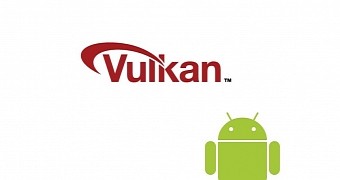Vulkan is a brand new 3D graphics API developed by the folks behind OpenGL which allows developers at Khronos to have more control over how their games and applications behave. Vulkan is also said to be more efficient than OpenGL.
This week, we are getting exciting news from Google regarding this API, as the company says it is adding support for Vulkan to Android. What’s more, in the near future, we’re going to see SteamOS, Tizen, Ubuntu, Red Hat and other Linux friends support the API too.
Vulkan might sound familiar to you and that’s because Apple also introduced at WWDC last year something similar. We’re talking about Apple Metal, which gives developers a low-level access to GPU so they can maximize the graphics and performance within games.
Like Vulkan, the system also provides games with direct access to GPU, so they can take advantage of the entire set of capabilities. The API also works with the device’s CPU in order to help with the distribution load among the various cores.
Vulkan is coming to Android
Vulkan allows devs to directly control GPU acceleration without going through the driver. This in turn, might make programming in Vulkan a bit harder, but it brings about some benefits like reduced power consumption and CPU usage.
Still, Vulkan hasn’t been developed for high-end devices with advanced specifications. It’s important to note that those rocking an entry-level to mid-range device will see that games perform better under Vulkan.
However, Vulkan is still under development, so we still have a few months to wait until we can see it get finalized. This will probably happen sometime towards the end of 2015, which means Android M will most likely come devoid of support for Vulkan. So as it seems now, Android N will be the first iteration of the operating system to boast Vulkan compatibility.
Curious to see what Vulkan can do? Well, Imagination Technologies has just posted a demo of Vulkan running on a Google Nexus Player with Google Android software on board and a PowerVR G6430 graphics processor. Check it out below.

 14 DAY TRIAL //
14 DAY TRIAL // 